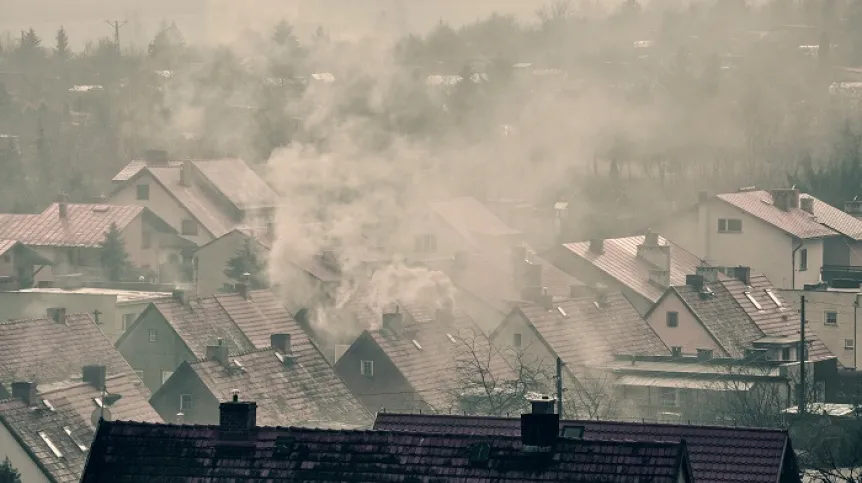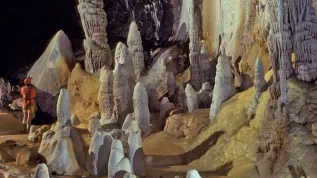
Air pollution in Poland, particularly in urban areas, remains a significant environmental and public health issue. A substantial portion of the particulate matter suspended in the air is attributed to the combustion of solid fuels in individual heating systems.
This form of pollution, often referred to as "low emission," accounts for approximately 50% of the total national emissions of particulate matter.
Despite improvements in air quality across Europe in recent decades, pollution levels in many regions—especially in cities—still exceed the limits set by the World Health Organization (WHO), highlighting the persistence of the issue.
The major contributors to air pollution in Poland can be categorized into several key sources: low-emission heating systems, road transport, and industrial emissions.
Low-Emission Heating Systems: The widespread use of solid fuels for heating purposes in individual households is a central factor contributing to Poland's air pollution. These heating systems, which burn coal, wood, and other solid fuels, are responsible for approximately 50% of the suspended particulate matter in the country. Such sources are particularly problematic in the winter months, when demand for heating is at its peak. The dispersed nature of these pollution sources makes their regulation and management a complex challenge for local authorities.
Road Transport: In urban environments, road transport emerges as a significant source of air pollution. Exhaust emissions from vehicles account for up to 20% of total emissions of particulate matter in Poland. Additionally, vehicle-related pollution includes not only emissions from exhaust pipes but also particulate matter generated by the abrasion of tires, brake pads, and other vehicle components. Furthermore, vehicles in motion can stir up particulate matter that has previously settled on road surfaces, exacerbating the problem.
Industrial Emissions: Power plants and industrial facilities also contribute to air pollution, though to a lesser extent than the aforementioned sources. In Poland, industrial activities account for approximately 10% of particulate matter emissions, while the remaining 5% is attributed to various industrial and manufacturing processes.
The distribution and concentration of air pollution are not solely determined by the volume of emissions. Meteorological conditions and topographical features also play a critical role in shaping air quality in a given region. For instance, windless weather, often associated with high-pressure systems, can trap pollutants in the atmosphere, particularly in the colder months. This phenomenon is exacerbated by thermal inversions, where a layer of warmer air traps cooler air below, preventing the dispersal of pollutants. In areas with valley-like terrain, polluted air may accumulate due to limited airflow, further deteriorating air quality.
It is important to note that not all sources of particulate matter are anthropogenic. Natural phenomena such as volcanic eruptions, wildfires, and the transport of dust from arid regions (e.g., the Sahara) can contribute to temporary spikes in particulate pollution. However, these natural sources generally account for a small proportion of total air pollution, with the exception of specific events like large-scale wildfires or volcanic eruptions.
Despite the ongoing challenges, air quality in Europe, including Poland, has shown improvements over the past few decades. According to data from the European Environment Agency (2022-2023), air quality in many regions is steadily improving, although it still fails to meet WHO standards in certain urban and industrial areas. National assessments, such as those conducted by the Chief Inspectorate of Environmental Protection (GIOŚ), also indicate a decline in the number of areas where pollution exceeds regulatory limits. However, this progress is gradual and varies by region.
In particular, low-emission sources remain the dominant factor influencing air quality in Poland. This form of pollution is not only widespread but also difficult to address due to the dispersed nature of residential heating systems. The challenge of managing these emissions is compounded by the fact that many of these heating systems continue to use outdated, inefficient technologies.
To further improve air quality, Poland, alongside the broader European community, will need to continue implementing a range of policy and technological solutions. These include: Transitioning to cleaner energy sources for heating, transport, and industry, such as renewable energy and electric vehicles, improving public transportation systems to reduce reliance on individual car use, especially in urban areas, optimizing traffic flow and vehicle speeds to reduce emissions from road transport, particularly in densely populated areas, and increasing road cleanliness and promoting the use of low-emission vehicles to reduce particulate matter generated from the wear and tear of tires and brakes.
Ultimately, achieving air quality that meets WHO standards will require concerted efforts at multiple levels—from local and national governments to individual residents. The key will be finding low- or zero-emission solutions for energy production and transportation while promoting more sustainable practices across society. (PAP)
PAP - Science in Poland, Ludwika Tomala
lt/ zan/ ktl/ kap/
tr. RL













